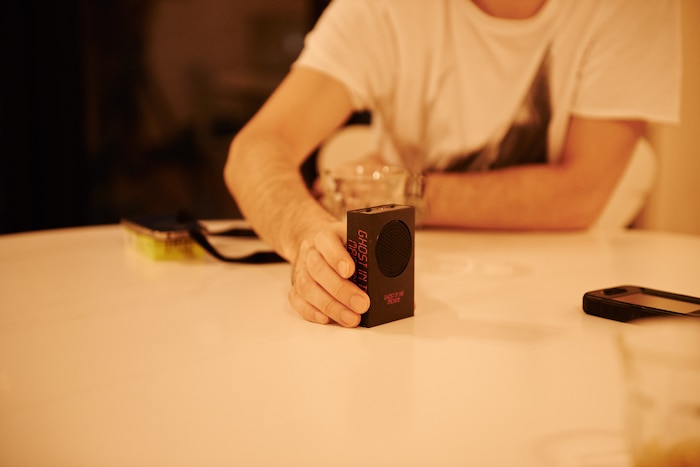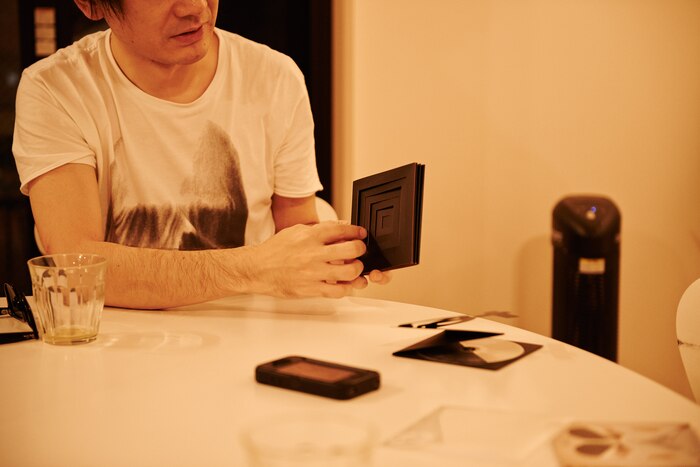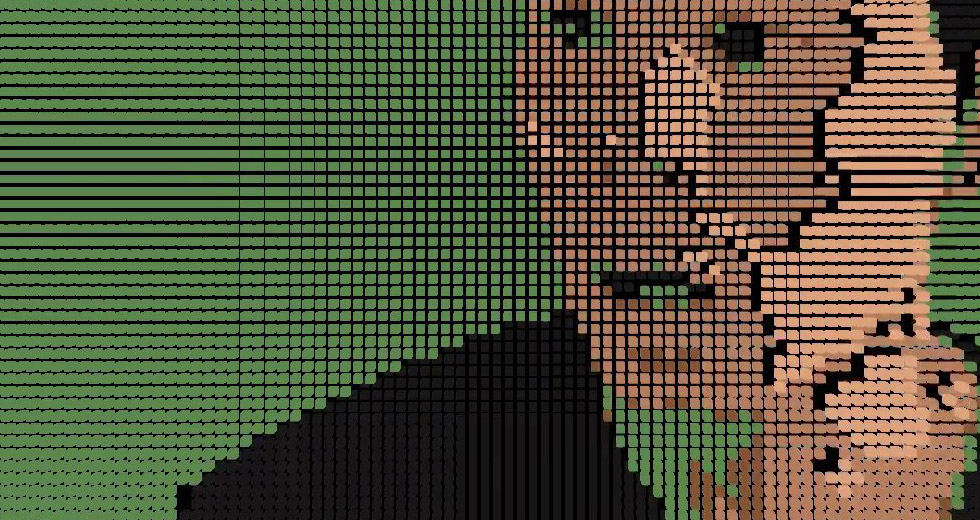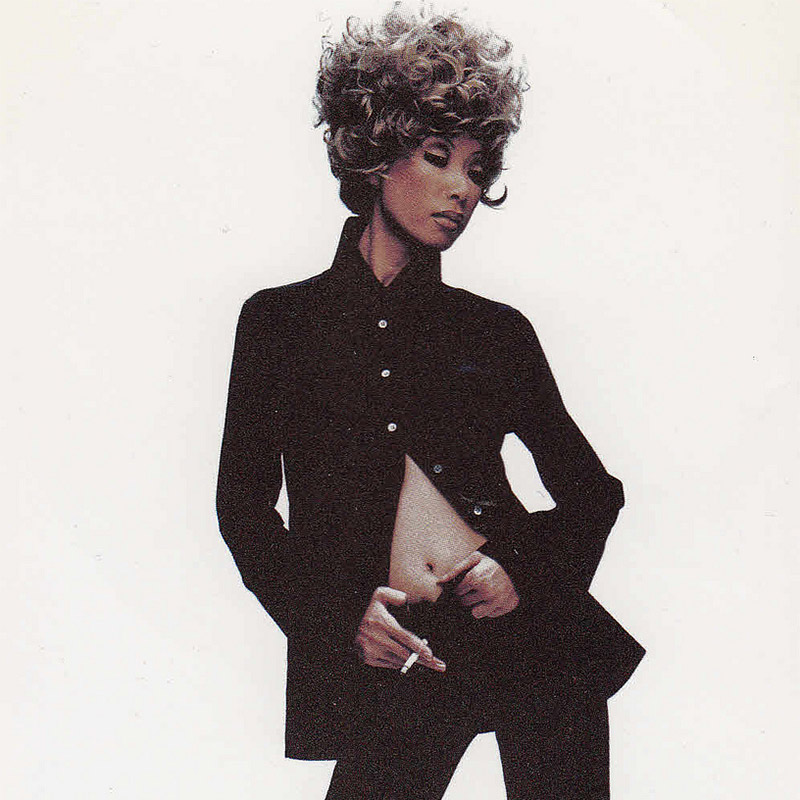Interview: Cornelius
It’s been eight years since his last full-length, but the alt pop icon has been anything but silent. Yu Onoda quizzes Cornelius about his various projects.
Keigo Oyamada, also known as Cornelius, has seemingly been keeping quiet since his 2006 album Sensuous. I’m not sure how much of his work after this record is known outside of Japan, but he has definitely not disappeared from the music scene. Internationally, his breakthrough was 1997’s Fantasma, a multi-layered pop masterpiece. He continued on 2001’s Point, an album that started to fuse together the music more strongly with visuals to create a 21st century version of psychedelic music.
In the past eight years, however, he’s been more active than ever, taking his inventive approach and applying it to different mediums in the Japanese music scene. We don’t have the space here to list the countless projects he worked on in the past eight years, but a short version might include the music for the educational design TV show Design Ah on Japan’s national public broadcasting network NHK, and the soundtrack for the animated film Ghost in the Shell ARISE. Other notable projects include the “salyu x salyu” project for the female singer Salyu, as well as collaboration projects with Yoko Ono, YMO, and a rising female singer named Ichiko Aoba. In this interview, we look back at these projects.
It’s been eight years since you released Sensuous in 2006. How have they been for you?
I was playing on all kinds of records and producing artists. I also made music for the educational TV show Design Ah, and produced the soundtrack for Ghost In The Shell ARISE. So I’ve been working on projects where I was given a theme to work with. It wasn’t intentional, but for a while as Cornelius, I felt like I was stuck in a routine of making records, releasing them, and then going on tour. There was a part of me that wanted to get away from that routine. So by making music for Design Ah and Ghost In The Shell ARISE, I had to make music for a theme or world that already existed, which was a different approach than making my own records. So I was able to challenge myself and try things that I wouldn’t try on my own records, and I was able to pull things out of me that were previously dormant, which was an interesting experience.
As Cornelius you’ve been known to synchronize music with visuals, but making music for Design Ah and Ghost In The Shell ARISE must have been a new experience for you. Plus, the music you made for these two projects are completely different in nature.
Yeah, that’s true. Design Ah is an educational TV show that is minimal and conceptual, where they explain everything by synchronizing music and visuals together in an intimate way. On the other hand, Ghost In The Shell ARISE has a distinct storyline and world that they created, plus there is dialogue and sound effects in the film. So the role that music plays in the film, is a little bit less compared to Design Ah. The staff of Design Ah is quite small, and the world that they created on the show is very positive, since the show is directed towards children and adults. Ghost In The Shell ARISE portrays a harder and dark science-fiction world, so in that sense, both of these projects were polar opposites.
In terms of combining visuals and music together, you told me before that you were collecting old animation and TV show footage.
Yeah, I was collecting animation soundtracks and vintage kid’s live action TV shows. There was a baby boom that occurred in the early ’70s in Japan, so there were lots of children’s TV shows, and there were lots of TV shows where the adults were trying to teach certain values to kids. There were also lots of shows that were experimental in terms of music and visuals, which really reflected the individuality of the people making them. The music made by Yuji Ohno for Lupin the Third, and the music that Takeo Yamashita produced was really hip. The names of the heroes, the titles of the shows, or the names of the lethal moves of the heroes would appear in the lyrics, so there was a strong link between the music and the TV show.
So they were early examples of synchronizing music and visuals. What got you interested in that kind of music?
Since I’m getting older, it was really fun for me to connect the dots in my head from my early musical memories as a child. I was collecting animation songs and music for TV commercials that I listened to as a child, which was the music I heard before I really got into music consciously. It was like reconnecting the synapses in my brain, by recovering my old musical memories.
So you were archiving your own memories.
Exactly. It didn’t matter whether I liked or disliked the song. I wanted to find the music that was lodged in my memory somewhere, and keep it by my side so I could listen to it at any time. So I was even collecting enka [traditional Japanese pop] songs too. [laughs] But I kind of got bored of collecting stuff after everyone started putting up old songs and footage on YouTube. [laughs]
It seems like you were finding a link between your memories and music. Did you discover anything new by doing that?
Yeah, there was. I rediscovered what drew me to the music I liked as a child. There was an educational TV show called Curiculla-Machine that I watched when I was young, and I was able to see what I liked about the show, and how it linked to what I wanted to do musically on Design Ah.
In terms of synchronizing visuals and music, what shows or filmmakers influenced you?
In rock, I loved the light shows of the Grateful Dead and Pink Floyd concerts. I was also influenced by the slideshow approach that Kraftwerk incorporated into their shows. Disney’s Fantasia and the Tom and Jerry cartoon were also things that I liked as a child. Robert Abel, who created the opening computer graphics scene for Tron was also an influence. In terms of producing the music for Design Ah, the German filmmaker Oskar Fischinger, and the Canadian filmmaker Norman McLaren were also big influences.
Speaking of synchronization, you released the cassette single “Moon Walk,” as well as “Star Fruit Surf Rider” where you had to play two copies of the 12-inch simultaneously to make it into one song. The packaging for Fantasma came with earphones. So you’ve always linked music, artwork, and packaging together to create one piece of art.
Nowadays it’s normal for a release to not have any packaging at all. But I grew up with vinyl. The packaging is an extension of the music, and a record is one piece of art including the packaging. So I’m always thinking of new packaging ideas.




The package design for the Design Ah and Ghost In The Shell ARISE soundtracks synchronized music and artwork in elaborate ways. You came up with the ideas for the packaging, right?
Yes. These days it costs a lot of money to release music with packaging, but the staff of Design Ah and Ghost In The Shell have a deep understanding about design, so I was able to release them this way.
The packaging on both releases incorporated die-cut techniques, so you guys must have put a lot of work into it.
They came out really well. Keita Ishiguro designed a die-cut package for ECD’sECDVD, and people like Bruno Munari and Koji Ishikawa have been releasing picture books with unique packaging, so I was inspired by them. I thought about combing the three design elements of circles, triangles, and squares to create the Design Ah logo. The music for Ghost In The Shell ARISE combines noise, industrial, drone, and minimal elements which seem to repeat eternally. I took that image, and combined it with the sci-fi wireframe imagery of Tron, and translated the sound into visuals.
You also released a Buddha Machine for Ghost In The Shell ARISE, which is similar to the Throbbing Gristle Buddha Machine in that it is in itself a piece of art.
I felt that the Buddha Machine was a perfect format to release the music of Ghost In The Shell ARISE, since it was based on drones and minimalism. If you play several of the Buddha Machines together, the sound creates a moire pattern which is really interesting. Nowadays there are so many different formats for listening to music from CDs, computers, iPods, to vinyl, so I thought a Buddha Machine would be an interesting way to release the music. Also, when you mash up “Ghost In The Shell” with Buddha Machine, you get “Ghost In The Machine.”
Ha! So that’s a reference to “Ghost In The Machine” by the Police?
Yes. [laughs] I also chose red and black as the color way, as a joke. It’s fun when all my ideas link together like that. I decided to release a Buddha Machine because all my ideas fit together for that format.
So you have been linking together music and visuals for the past eight years, but you’ve also collaborated with older musicians such as Yoko Ono and YMO, as well as younger musicians such as Salyu and Ichiko Aoba.
Yoko Ono is turning 81 this year, and the three members of YMO are over 60. I’ve been playing with them for a while now so I’m getting used to it, but when I’m on stage with these musicians that I used to watch on TV as a child, I start thinking to myself, “Wait, what am I doing here?” It’s an honor that people of their stature asked me to collaborate with them, and I have a lot to learn from them even if they aren’t verbally trying to teach me something. The three members of YMO are all from Tokyo, so we have a lot in common when we play music together. On the other hand, I don’t have much in common with Yoko Ono. [laughs] To be accurate, I don’t think anyone has what Yoko Ono has. But Yoko is one of the oldest original punk rockers of the world, and she has a really intense energy. She drags you into her world, but there’s something addictive about it. She has more energy than anyone I know. [laughs]
What do you think of the changes YMO went through starting with techno-pop in the 80s to techno and now electronica?
They’re honestly reflecting their interests and what’s going on in the world. Kraftwerk seems more like a traditional performance group now, whereas YMO is completely different from what they were in the past, and their motivations are constantly changing. When I started working with YMO they were inspired by electronica, but the last time I performed with them we were all playing as a live band, so they have evolved enormously. Hosono was listening to Elvis Presley and Beatles in real time, and he made his debut in the late ’60s when rock & roll was in its heyday. So he lived through the Woodstock era, and he broke onto the international music scene with YMO at the same time that Japan was experiencing its economic growth as a country. In that sense, I am envious of him because as he has grown older, he has experienced every stage of the music scene. It was too late for my generation to experience all that, so I feel sorry for the musicians that are even younger than me.
The music industry in Japan reached its peak in 1998, and after that the record sales have continuously been dropping. But you have been working with younger singers such as Salyu or Ichiko Aoba. How has that been for you?
Salyu is 10 years younger than me, and Ichiko is 10 years younger than Salyu. So there is a generational difference, but going beyond age or generation, everyone has something unique about them. And sometimes people have a common sensibility that transcends age or generation, which is more important than being close to somebody in age. Salyu is a true vocalist who specializes in using her voice, and she asked me to work with her. As I worked with her, I really got drawn into the “salyu x salyu” project. I don’t really trust myself as a vocalist, and what I can do with my voice is very limited. So by working with her, I was able to step into territory that I wouldn’t have tried myself.
We asked Shintaro Sakamoto and Tabito Nanao to write lyrics for us, so it turned out to be a collaboration that I wouldn’t have been able to realize on my own records. After that, I asked Shintaro Sakamoto to write lyrics for Ghost In The Shell ARISE, so a lot of good things came out of that collaboration. Ichiko Aoba is 20 years younger than me, so it feels like she could be my daughter. [laughs] She is really at the forefront of her generation, and she’s such a genius. When we collaborate, all I do is play a little guitar, but she brings such focus and intensity to what she does, and she’s an incredibly talented guitarist. When I first met her she was only 19, and she had only been playing guitar for two years. I’ve been playing for 20 years, but she was so good on the guitar that she even surprised me. [laughs]
So it has been eight years since Sensuous, and you’ve done all these collaborations, but have you been able to work on your next album?
I’ve been working on it little by little. I am working on several projects as usual, and after doing so many collaborations these eight years, I finally feel like working on my own music. I’m getting really motivated, so I’m hoping I can finish my record next year.
Translated by Hashim Kotaro Bharoocha
Header image © Kiyoaki Sasahara

